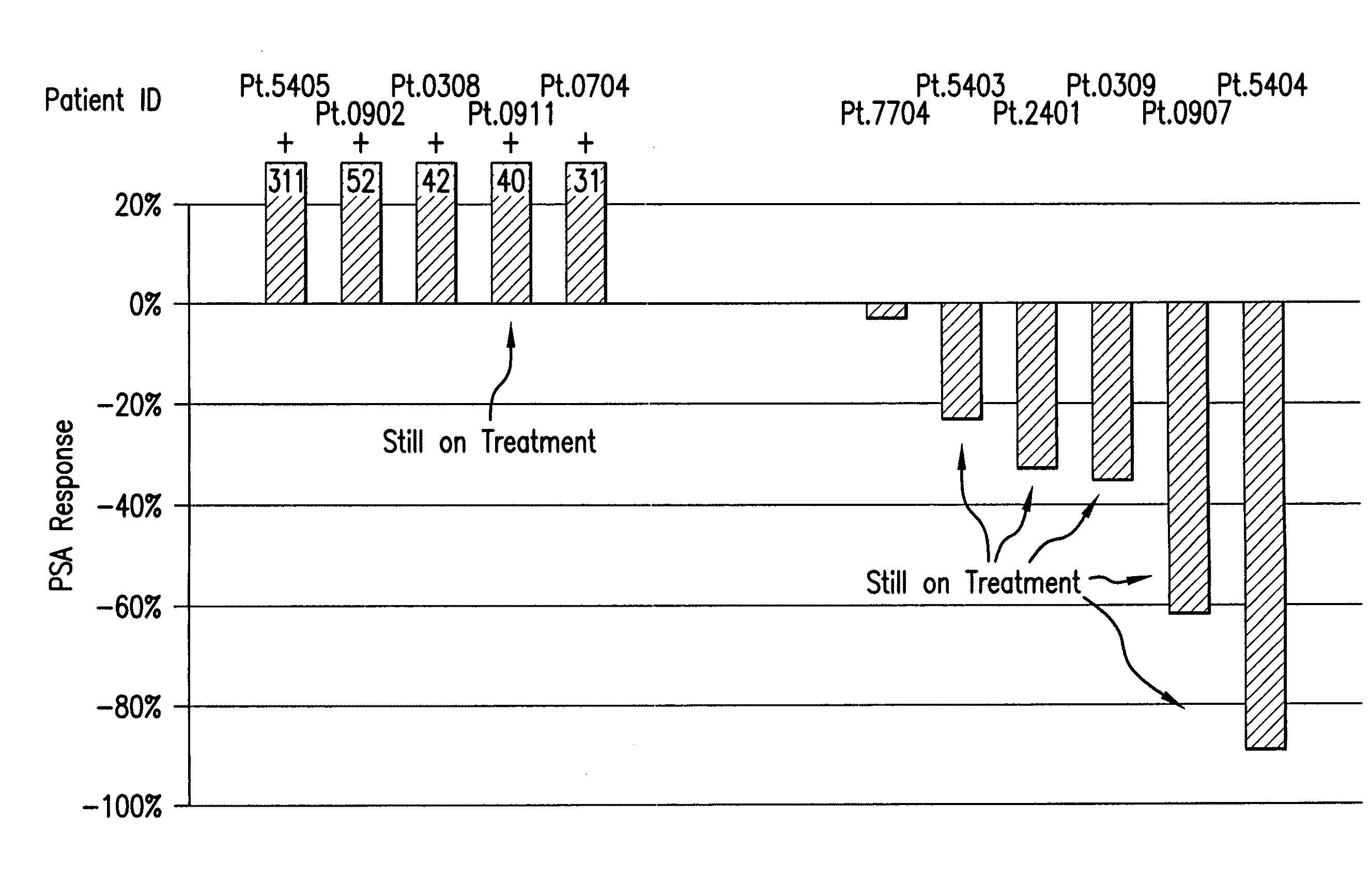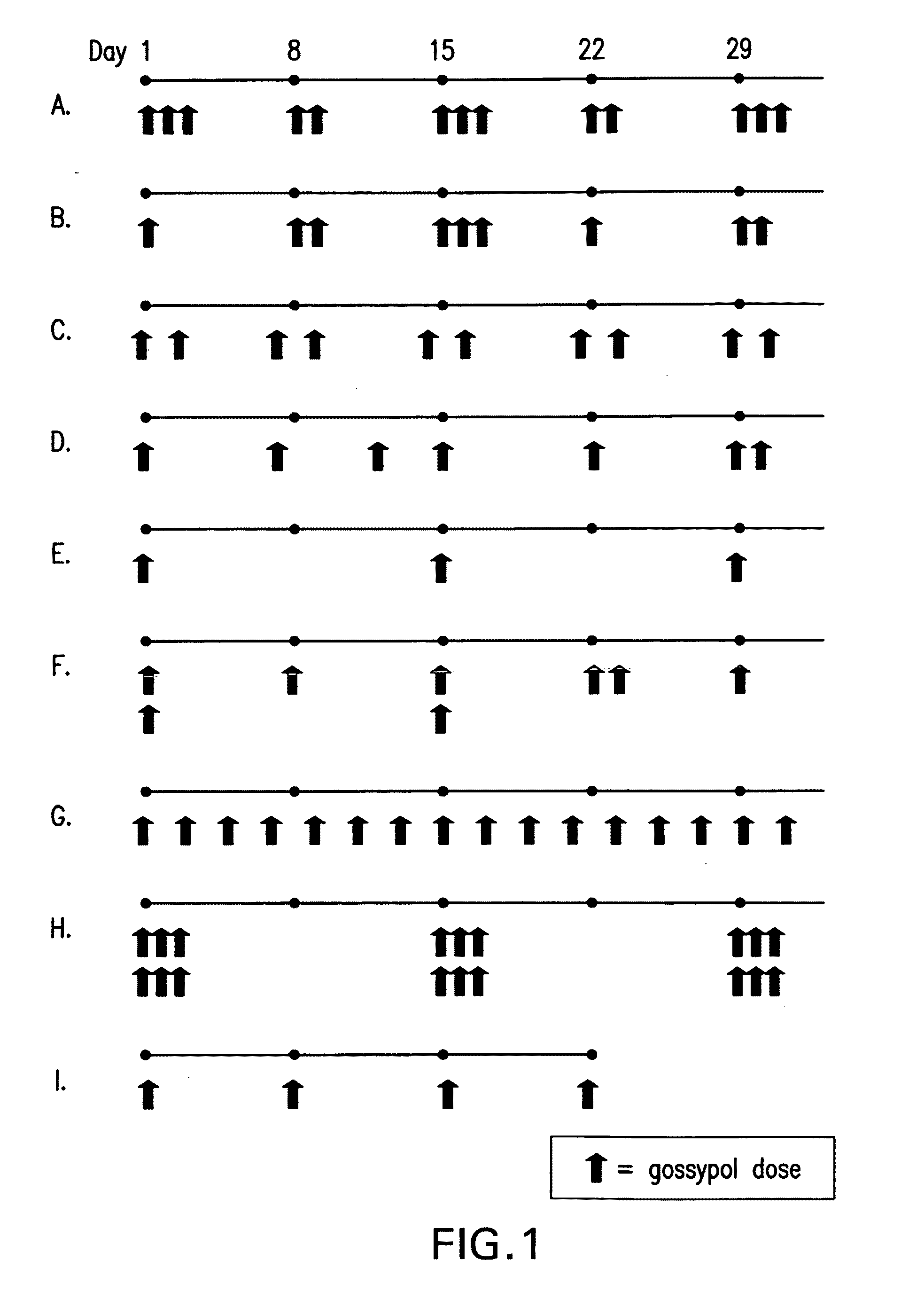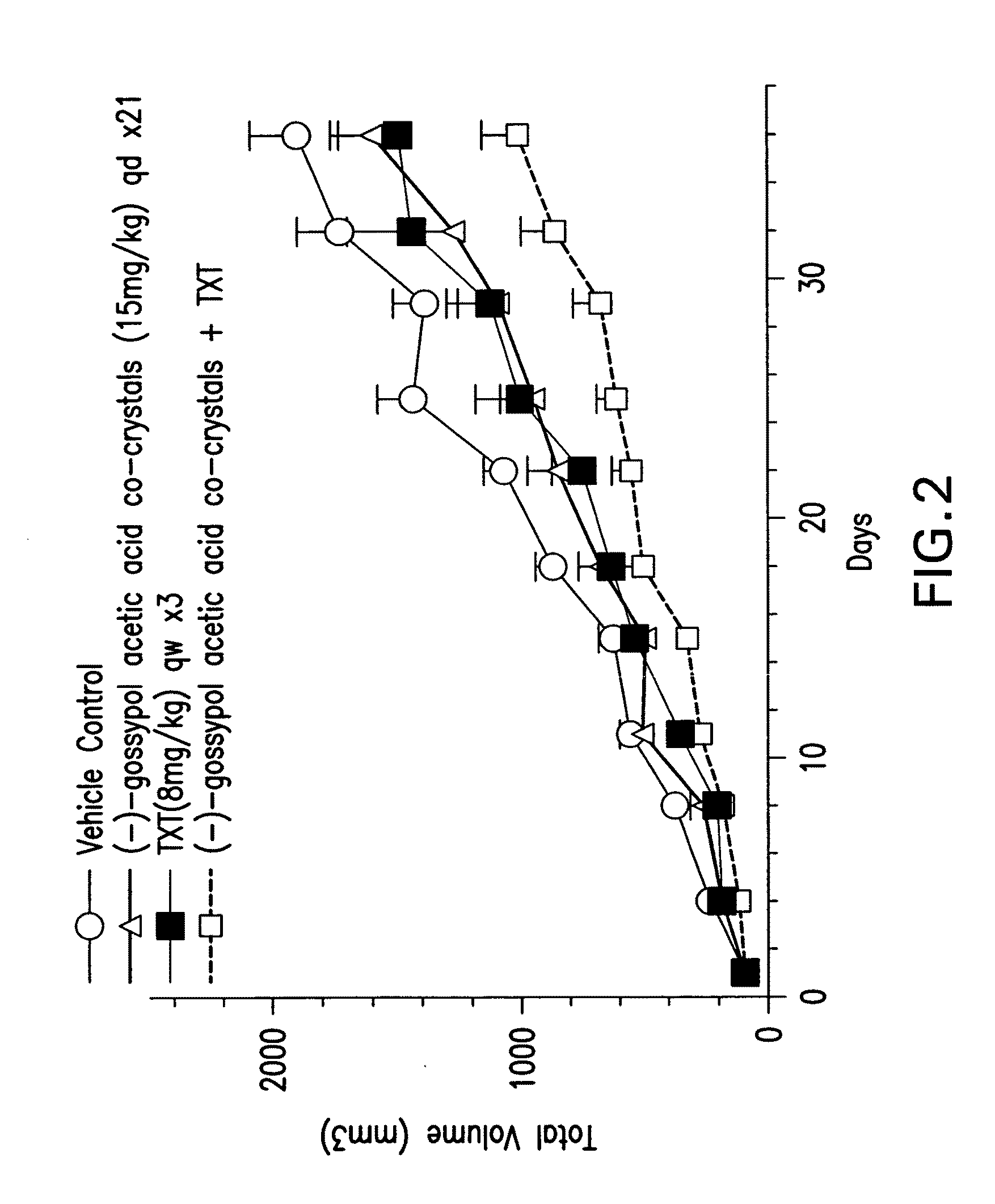Pulsatile dosing of gossypol for treatment of disease
a technology of gossypol and pulsatile, which is applied in the field of medicinal chemistry to achieve the effects of reducing adverse events, increasing the sensitivity of cells to inducers, and inhibiting the activity of anti-apoptotic bcl-2 family proteins
- Summary
- Abstract
- Description
- Claims
- Application Information
AI Technical Summary
Benefits of technology
Problems solved by technology
Method used
Image
Examples
example 1
Pulsatile Dosing of Gossypol
[0113]A phase I clinical trial was carried out to compare the maximum tolerated dose and safety of daily (i.e., continuous) versus pulsatile (i.e., intermittent) dosing of (−)-gossypol in patients with advanced cancer. A secondary objective of this study was to identify any anti-tumor activity of (−)-gossypol. Patients were treated with increasing doses of (−)-gossypol according to the following dosing schedules: “Daily” dosing: 5 to 60 mg / day of (−)-gossypol on 21 days per 28 day cycle; “BID×3d” dosing: 30 to 80 mg BID of (−)-gossypol on 3 consecutive days (e.g., Monday-Tuesday-Wednesday) repeated every other week per 28 day cycle; and “Weekly” dosing: 80 to 200 mg of (−)-gossypol once weekly per 28 day cycle. Adverse events (AEs) were graded by NCI-CTCAE v3. Overall, pulsatile dosing (BID×3d and Weekly) resulted in a reduced percentage of AEs, particularly Grade ¾ AEs, as compared to continuous daily dosing (see Table 2, Any AE).
example 2
[0114]Following (−)-gossypol administration to patients with advanced cancer, clinical efficacy (e.g., patients having stable disease for 60 days or more) was monitored according to the following dosing schedules: “Daily” dosing: 5 to 60 mg / day of (−)-gossypol on 21 days per 28 day cycle; “BID×3d” dosing: 30 to 80 mg BID of (−)-gossypol on 3 consecutive days (e.g., Monday-Tuesday-Wednesday) repeated every other week per 28 day cycle; and “Weekly” dosing: 80 to 200 mg of (−)-gossypol once weekly per 28 day cycle. Pulsatile dosing (BID×3d) resulted in a longer median duration of days of stable disease as compared to continuous daily dosing (Table 3).
TABLE 3(−)-Gossypol Clinical EfficacyDailyBID × 3 dWeeklyN = 38N = 21N = 12Median # (%) of 6 (16) 6 (24) 2 (13)patients with stabledisease ≧60 daysMedian duration of82 (56-341)180 (72-443)69 (58-80)days of stabledisease (range)
example 3
In Vivo Efficacy of (−)-Gossypol Acetic Acid Co-Crystals in the A549 Non-Small Cell Cancer (NSCLC) Xenograft Model
[0115]The in vivo efficacy of (−)-gossypol acetic acid co-crystals alone or in combination with taxotere (TXT) in the A549 NSCLC xenograph model is shown in FIGS. 2 and 3. About 5 million cells of A549 were inoculated into nude mice, 8 mice per dosing group. In one experiment, (−)-gossypol acetic acid co-crystals were administered at 15 mg / kg, oral dosing (po), daily for 21 days, either alone or in combination with taxotere at 8 mg / kg, iv, once a week for three weeks (FIG. 2). In another experiment, (−)-gossypol acetic acid co-crystals were administered at 60 mg / kg, po, daily for three days per week (day 1-3 / week) every two weeks (days 1-3, and then days 15-17), either alone or in combination with taxotere at 30 mg / kg, iv, single dose only, once every three weeks (FIG. 3). The results of these studies show inter alia that an intermittent dosing of (−)-gossypol acetic aci...
PUM
| Property | Measurement | Unit |
|---|---|---|
| enantiomeric excess | aaaaa | aaaaa |
| temperature | aaaaa | aaaaa |
| temperature | aaaaa | aaaaa |
Abstract
Description
Claims
Application Information
 Login to View More
Login to View More - R&D
- Intellectual Property
- Life Sciences
- Materials
- Tech Scout
- Unparalleled Data Quality
- Higher Quality Content
- 60% Fewer Hallucinations
Browse by: Latest US Patents, China's latest patents, Technical Efficacy Thesaurus, Application Domain, Technology Topic, Popular Technical Reports.
© 2025 PatSnap. All rights reserved.Legal|Privacy policy|Modern Slavery Act Transparency Statement|Sitemap|About US| Contact US: help@patsnap.com



